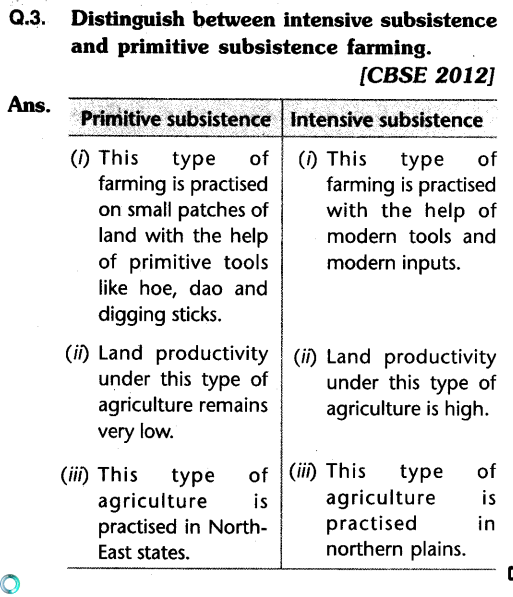Checking Out the Trick Differences Between Commercial Farming vs Subsistence Farming
Wiki Article
Exploring the Differences Between Commercial Farming and Subsistence Farming Practices
The duality between commercial and subsistence farming techniques is noted by differing objectives, functional scales, and source application, each with extensive effects for both the environment and society. Business farming, driven by earnings and effectiveness, often employs sophisticated technologies that can bring about substantial ecological concerns, such as dirt degradation. On the other hand, subsistence farming stresses self-sufficiency, leveraging standard methods to maintain house requirements while nurturing community bonds and social heritage. These contrasting techniques raise intriguing questions regarding the equilibrium between financial development and sustainability. Exactly how do these different strategies shape our world, and what future directions might they take?Economic Goals
Economic goals in farming methods frequently determine the techniques and range of operations. In commercial farming, the key economic purpose is to maximize earnings.In comparison, subsistence farming is mainly oriented towards satisfying the instant needs of the farmer's family members, with surplus production being very little - commercial farming vs subsistence farming. While industrial farming is profit-driven, subsistence farming is focused around sustainability and durability, reflecting a fundamentally various collection of economic imperatives.

Range of Procedures
The difference between industrial and subsistence farming comes to be particularly apparent when taking into consideration the scale of procedures. Commercial farming is defined by its massive nature, usually incorporating comprehensive systems of land and employing sophisticated equipment. These procedures are commonly incorporated right into global supply chains, generating huge amounts of plants or animals meant up for sale in domestic and international markets. The scale of industrial farming permits economies of range, leading to reduced prices each through automation, boosted efficiency, and the capability to buy technological developments.
In raw comparison, subsistence farming is normally small-scale, focusing on generating just sufficient food to fulfill the immediate needs of the farmer's family members or regional area. The land area entailed in subsistence farming is usually limited, with less accessibility to modern innovation or mechanization.
Resource Application
Resource use in farming methods discloses significant differences between commercial and subsistence techniques. Commercial farming, identified by large-scale procedures, often employs advanced modern technologies and automation to maximize using resources such as land, water, and fertilizers. These methods permit enhanced efficiency and higher productivity. The focus gets on making the most of results by leveraging economic situations of scale and deploying sources strategically to make sure constant supply and profitability. Precision agriculture is progressively embraced in business farming, using information analytics and satellite innovation to keep an eye on crop health and optimize source application, additional enhancing return and resource efficiency.On the other hand, subsistence farming operates a much smaller range, mostly to meet the immediate needs of the farmer's household. commercial farming vs subsistence farming. Source use in subsistence farming is commonly limited by economic constraints and a dependence on conventional methods. Farmers typically utilize manual labor and all-natural resources offered in your area, such as rain and natural compost, to cultivate their crops. The focus gets on sustainability and self-sufficiency as opposed to making the most of result. Subsistence farmers may encounter challenges in resource monitoring, consisting of minimal access to boosted seeds, fertilizers, and watering, which can limit their capability to enhance productivity and success.
Environmental Impact

Conversely, subsistence farming, exercised on a smaller sized range, generally utilizes standard strategies that are much more in consistency with the surrounding setting. While subsistence farming commonly has a lower ecological impact, it is not without difficulties.
Social and Cultural Ramifications
Farming practices are deeply intertwined with the social and cultural textile of neighborhoods, influencing and showing their values, practices, and economic frameworks. In subsistence great site farming, the emphasis is on growing adequate food to meet the immediate needs of the farmer's family members, usually promoting a strong feeling of neighborhood and shared responsibility. Such techniques are deeply rooted in neighborhood traditions, with expertise passed down via generations, therefore maintaining social heritage and reinforcing communal connections.Conversely, business farming is largely driven by market needs and profitability, typically resulting in a shift towards monocultures and large-scale operations. This strategy can bring about the disintegration of standard farming methods and cultural identifications, as local customizeds and expertise are replaced by standard, industrial methods. The emphasis on efficiency and profit can often decrease the social communication found in subsistence areas, as economic transactions replace community-based exchanges.
The dichotomy between these farming methods highlights the wider social effects of farming choices. While subsistence farming sustains cultural connection and area connection, industrial farming straightens with globalization and financial development, usually at the price of conventional social frameworks and cultural diversity. commercial farming vs subsistence farming. Balancing these elements continues to be a crucial challenge for lasting farming advancement
Verdict
The exam of industrial and subsistence farming techniques discloses substantial distinctions in goals, range, resource use, environmental influence, and social implications. Alternatively, subsistence farming highlights self-sufficiency, making use of regional resources and traditional approaches, consequently advertising social conservation and neighborhood communication.The dichotomy in between industrial and subsistence farming techniques is noted by varying objectives, operational scales, and resource use, each with profound effects for both the environment and culture. While commercial farming is profit-driven, subsistence farming is focused around sustainability and resilience, mirroring an essentially different set of financial imperatives.
The distinction in between business and subsistence farming becomes specifically evident when thinking more information about the range of operations. news While subsistence farming sustains social continuity and area connection, business farming straightens with globalization and financial development, usually at the expense of typical social structures and social variety.The examination of industrial and subsistence farming techniques exposes considerable distinctions in objectives, range, resource usage, ecological influence, and social ramifications.
Report this wiki page